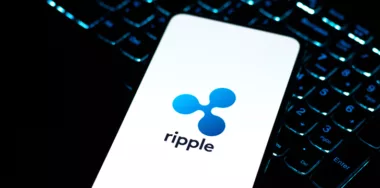| Getting your Trinity Audio player ready... |
The IEEE event in Montreal in October confirmed what many blockchain enthusiasts have known for a while: IPv6 and Bitcoin on the BSV blockchain were made for each other.
The move from IPv4 to IPv6 signifies a generational change in the IP protocol which is like the change from ARPANET to the TCP/IP internet of January 1, 1983. A new version of the protocol has long been planned. IPv4 ran out of addresses in January 2011.
Now, as the world adopts IPv6 as the plumbing for the internet, the benefits of the new version of the protocol show the perfect match of IPv6 and Bitcoin.
According to speaker Lawrence Hughes, author of the upcoming book Third Generation Internet Revealed: Reinventing Computer Networks with IPv6 1st ed. Edition, the numbers of existing IPv6 installations is far larger than expected.
Over 50% of developed countries already use IPv6, around 95% of wireless carriers use it and 41% of the queries directed to google.com use IPv6 to query the search engine.
It is easy to see why the internet is ripe for IPv6. The protocol gives a staggering number of globally unique IP addresses to accept incoming nodes. More importantly IPv6 enables you to make connections directly from one mobile device to another. In fact, every device on the internet can have its own unique address space and communicate with each other using a secure peer to peer connection.
IPv4 forced devices to use a third-party to exchange data. Network Address Translation (NAT) provides a one-to-one IP address translation at a basic level and the ability to map multiple private hosts to one public IP address—such as that provided to the router by an ISP.
To add security, implement TLS. In this case, one node is the server, and one node is the client who must use password technology to connect to the server, and route to another client. One node cannot connect directly to another node. An intermediary is needed—such as a certificate server to give certificates to each client. Using intermediaries breaks TLS.
Traditional email such as IMAP or FTP connections use a server which can be secured by TLS—an add on to IPv4. Unfortunately, you cannot achieve peer to peer connections and security.
However, using IPv6 it is possible to achieve this. Each IPv6 device operates as both a client and a server. There is no need for an IMAP server as the information is already on each device as it negotiates with another device.
S/MIME adds another layer of security to email and ftp. Yet a single certificate can be used for peer TLS and S/MIME and strong client authentication or other certificate services.
This is an exciting time to be active on the internet—all this information was downloaded from IPv6 Forum.
This type of connection mechanism is very difficult to snoop end to end. With IPv6 every node is both a client and a personal server. Any node can accept incoming connections which means hackers cannot snoop on the end-to-end connection.
IPv6 enables peer-to-peer connections using a peer TLS (Transport Layer Security) connection. Peer TLS eliminates the need to have a server. As most hacking and snooping occurs on intermediary nodes that are waiting for instructions, using peer TLS makes sense. There is no need to have intermediary servers or NAT routers to provide security. IPSec is built into the IPv6 protocol by default.
Peer-to-peer connections are ideal for IoT and blockchain infrastructure solutions. IoT devices communicate as peers—offering end to end encryption—and enables zero trust architecture deployments. Zero trust architecture moves network defenses from network perimeters to users, assets and resources.
Symbiosis of Bitcoin and IPv6
Dr. Craig Wright, author of the Bitcoin White Paper agrees with Hughes. He explained how IPv6 is perfect for Bitcoin. Bitcoin launched in 2009 and supported peer to peer transactions from the start. Peers could talk directly to another peer with transactions recorded on-chain. Peer to peer offers direct communications. If every node must search for a transaction, internet traffic would quickly grind to a halt.
IPv6 connectivity solves each device on the blockchain searching for a transaction. Two users directly connect. Each proves who they are by digitally signing with each other, the transaction is made and recorded.
There is no need for any Usenet or other server. Electronic cash can be sent directly from one user to another with IPv6—a different concept to implementations using IPv4 which need intermediaries.
These connections have anthropomorphic value—take a key, hash it, get a completely new key, and you have traceability—you can prove that you are the purchaser of each transaction on the blockchain.
Nodes enforce transactions. The word ‘enforce’ is important. Police don’t serve or change the rules, but merely enforce existing rules. Nodes enforce rules that are fixed. The TCP protocol has not changed since it was introduced.
Software that constantly changes is destined to have issues. Novell Netware regularly released software updates. Yet it has been discontinued as has DECnet, and Banyan Vines. Forcing users to change protocols does not aid innovation Dr. Wright said. If you change the protocol, it will never gain wide adoption.
Innovation is not based on adjusting the underlying protocols. If the protocol is stable, it allows innovation on a stable protocol that will last. You can create something that is stable and endures.
Emerging business opportunity
Blockchain nodes exchange info between peers. With IPv6 there is no need for an intermediary as peer-to-peer happens by default. Therefore, if you’re using the blockchain you should be using IPv6.
Entrepreneurs may identify a business opportunity with IPv6. The savvy business could sell X509 or other types of certificates to users. There are potentially billions of devices that need a certificate. Casual users will need simple certificates, whilst other organisations could have more complex certificate requirements where users need to prove their identity by providing extra documentation before getting the certificate.
Bob and Alice will be able to exchange keys directly with each other—including authentication headers and packets—enabling them to implement end to end encryption between them.
Alice talks to Bob. Bob proves his identity using any identity certificate such as X 509, or any client encryption. They negotiate with their comms and chats hashed and built into a bitcoin transaction stored on chain. There is no public information stored on chain. However, there is a permanent record between both parties stored on the blockchain.
This is unwelcome news for money launderers, child porn, or drug dealers. Legitimate businesses want a detailed immutable record to show that you sold something.
This model—where two parties send information and settle the ledger—is a peer-to-peer exchange that is between two individuals, not a networked mesh full of secrets like the Silk Road which was shut down in 2013 putting many of its operators in prison.
On the blockchain, all transactions are recorded—and can be traced. It is irrelevant what is exchanged online, the transactions should not be centralized.
Paying in cash now means that you give cash away to someone else. You hand something to someone else. Bitcoin is handed to someone else, and you no longer own it.
Decentralization pushes the transactions to the edge of the network. The nodes act as honest agents. Alice connects to Bob and confirms that she is talking to Bob not Charlie. Once confirmation has been made, you can control performance of IoT (Internet of Things) devices. Devices such as: automatic systems, contracts, licensing. Ownership can be set and transferred. You can own digital goods like you can own a physical item like a CD.
Audible might remove your rights to all your books—Amazon could take away any of these at any time it wants to. But with IPv6 public addresses. Devices can move away from centralised messaging—moving the ownership to edge computing with Zero Trust Architecture.
Only with a stable protocol can innovation occur, and IPv6 gives users that opportunity. It is an opportunity that businesses should fully embrace.
Watch: Dr. Craig Wright keynote speech at GBC22, A Better Internet with IPv6 and BSV Blockchain
New to blockchain? Check out CoinGeek’s Blockchain for Beginners section, the ultimate resource guide to learn more about blockchain technology.









